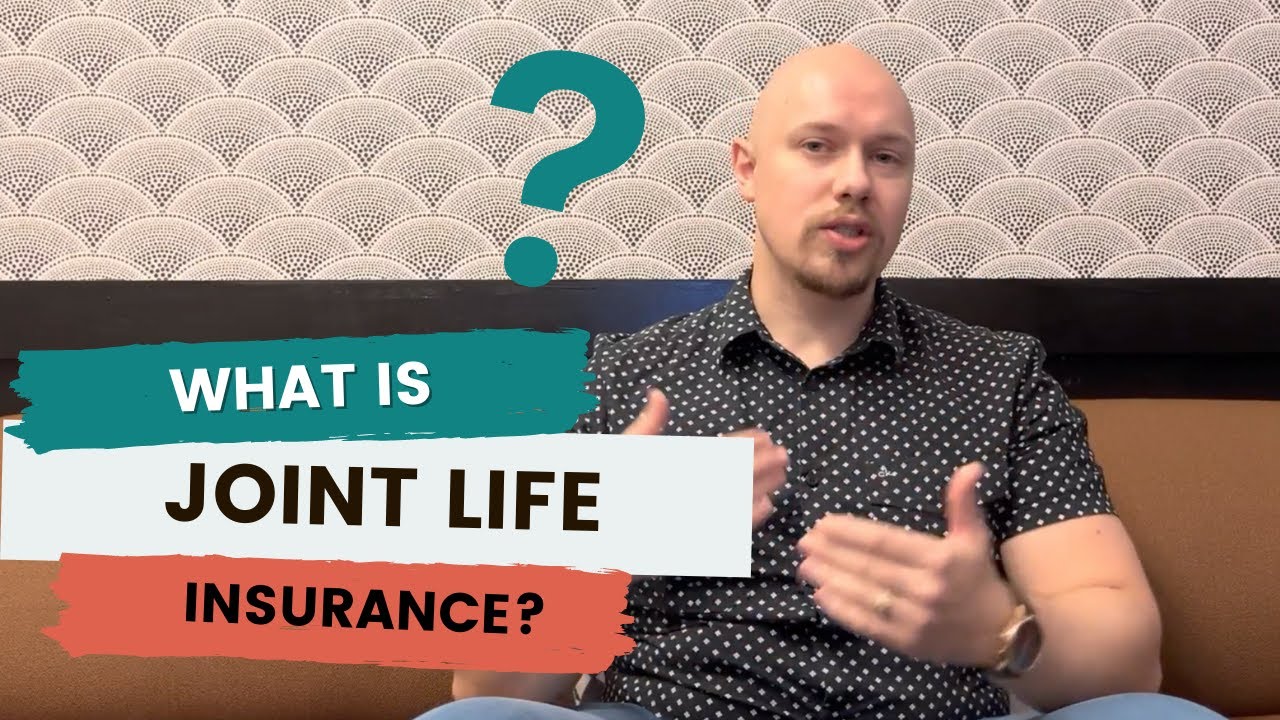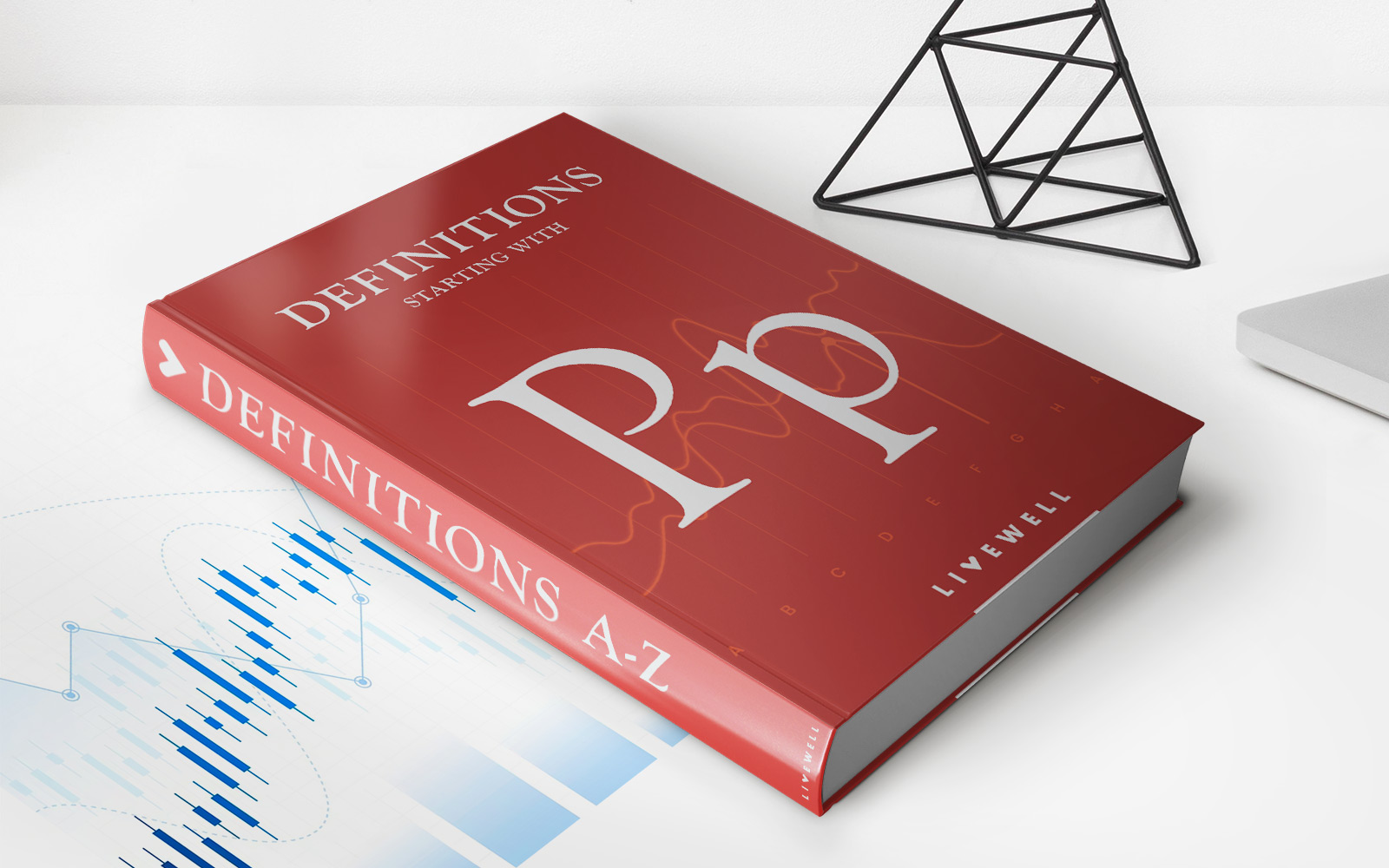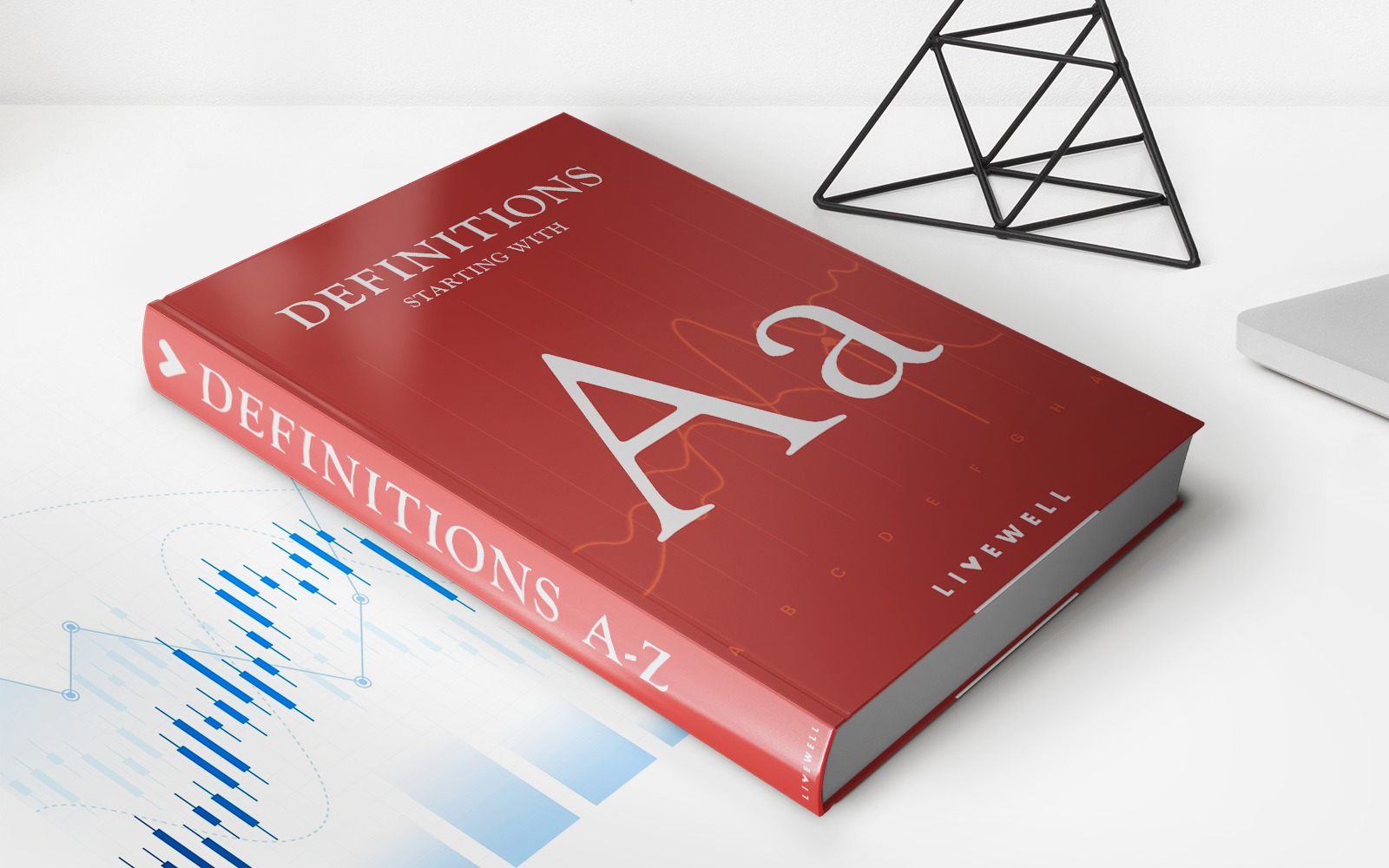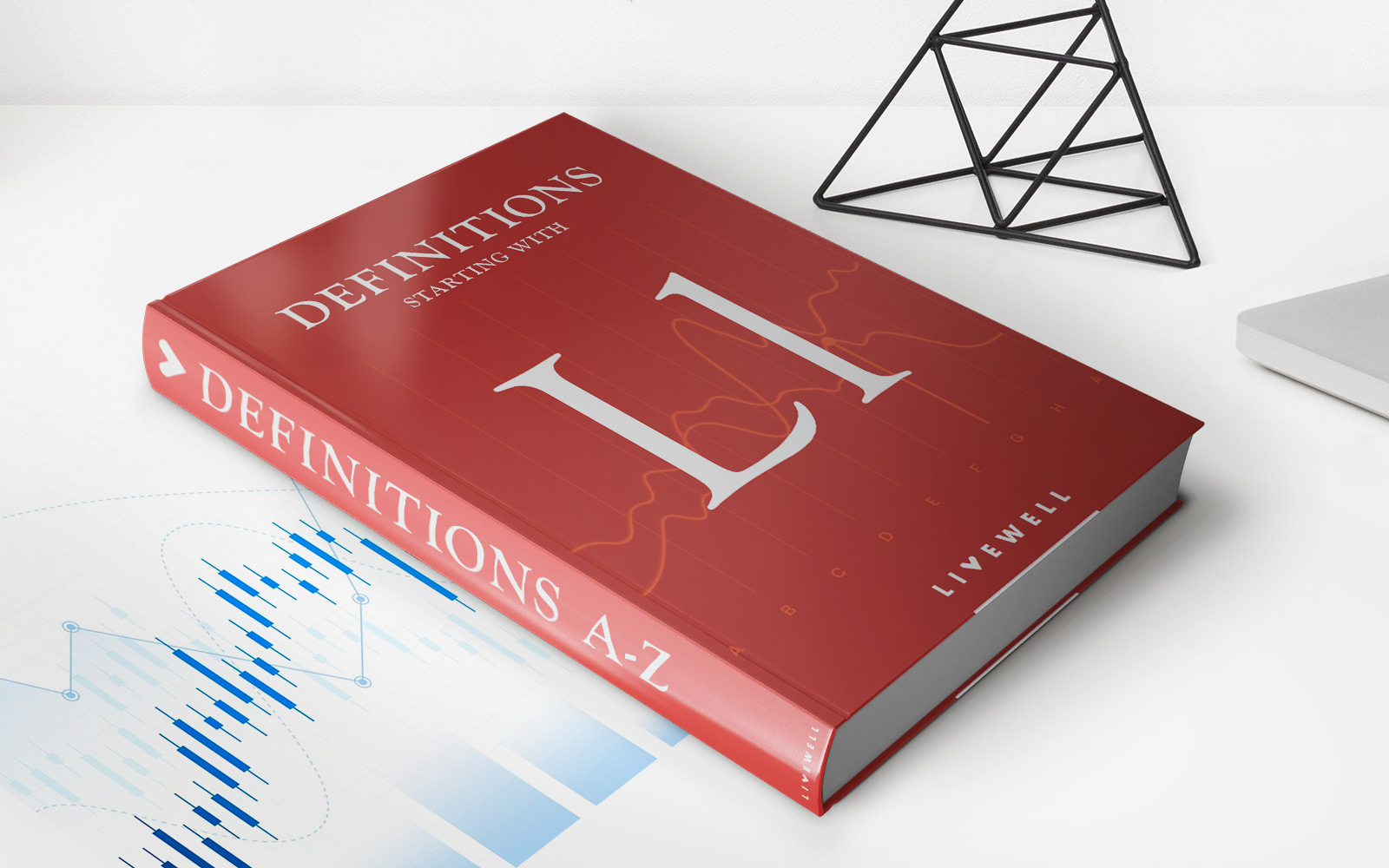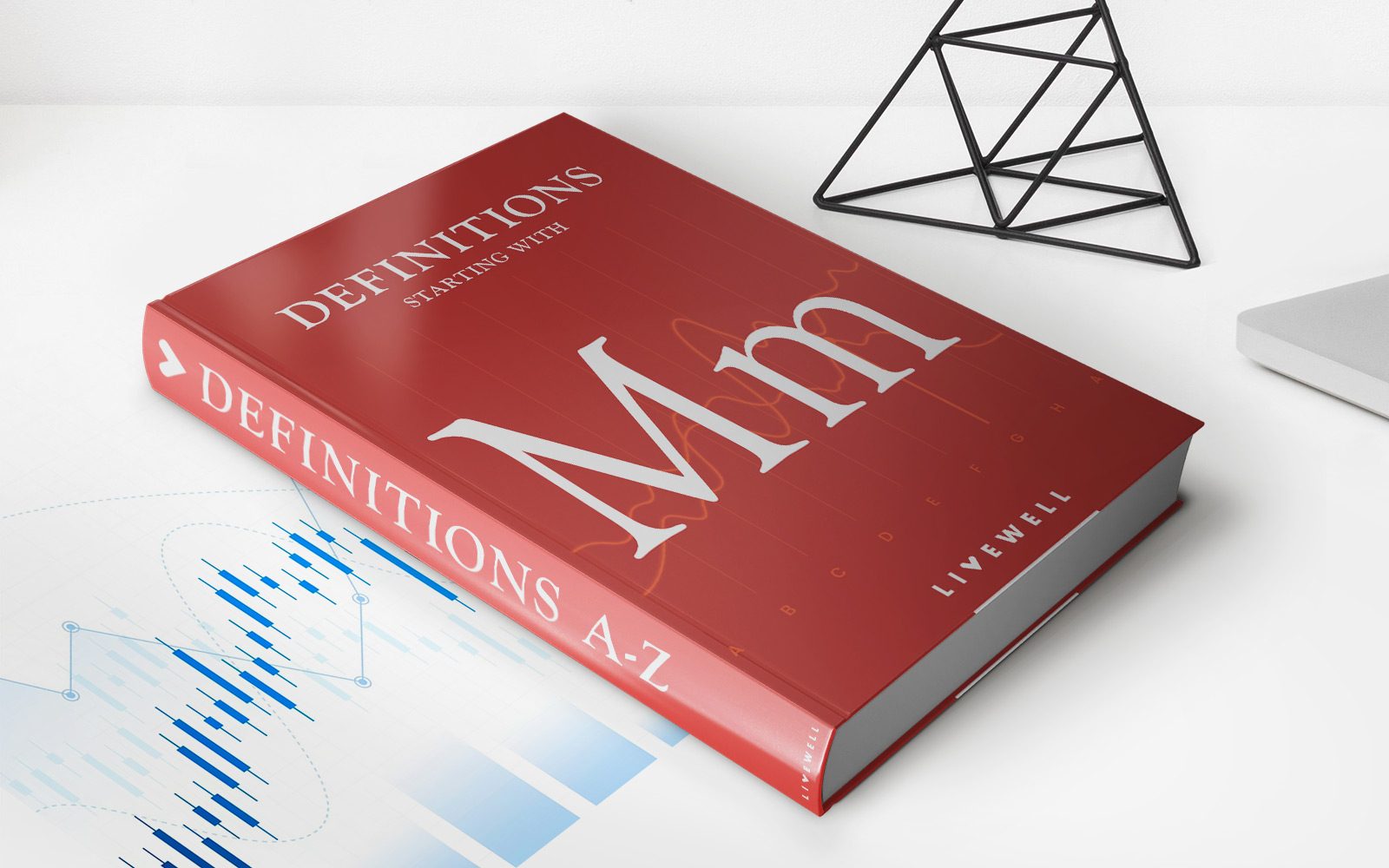

Finance
What Is Death Indemnity Insurance?
Modified: February 21, 2024
Death indemnity insurance is a financial product that provides a lump sum payment to beneficiaries upon the policyholder's death, offering a means to protect their loved ones and provide financial security.
(Many of the links in this article redirect to a specific reviewed product. Your purchase of these products through affiliate links helps to generate commission for LiveWell, at no extra cost. Learn more)
Table of Contents
- Introduction
- Definition of Death Indemnity Insurance
- How Death Indemnity Insurance Works
- Benefits of Death Indemnity Insurance
- Drawbacks of Death Indemnity Insurance
- Factors to Consider Before Purchasing Death Indemnity Insurance
- Types of Death Indemnity Insurance Policies
- Coverage and Exclusions of Death Indemnity Insurance
- Comparison of Death Indemnity Insurance with Other Types of Life Insurance
- Common Misconceptions about Death Indemnity Insurance
- Conclusion
Introduction
Death Indemnity Insurance is a specialized type of life insurance that provides a lump sum payment to beneficiaries upon the death of the policyholder. Unlike traditional life insurance policies that offer accrued cash value or an investment component, death indemnity insurance is solely focused on providing financial protection to loved ones in the event of the insured’s death.
This type of insurance is particularly beneficial for individuals who want to ensure that their family members or dependents are financially secure and can maintain their standard of living after they pass away. Whether it’s paying for funeral expenses, covering outstanding debts, or providing income replacement, death indemnity insurance can offer peace of mind when it comes to protecting the financial future of your loved ones.
Death indemnity insurance policies are typically term-based, meaning they provide coverage for a specific period of time, such as 10, 20, or 30 years. The premiums, or the amount you pay for the policy, are based on various factors like your age, health, and the coverage amount you choose.
While death indemnity insurance may seem similar to other types of life insurance, it is important to understand its unique features, benefits, and limitations before making a decision to purchase a policy. In this article, we will explore the definition of death indemnity insurance, how it works, its benefits and drawbacks, factors to consider before purchasing a policy, types of death indemnity insurance, coverage and exclusions, and how it compares to other types of life insurance.
By the end of this article, you will have a comprehensive understanding of death indemnity insurance and be better equipped to make an informed decision about whether it is the right choice for you and your loved ones.
Definition of Death Indemnity Insurance
Death Indemnity Insurance, also known as death benefit insurance or pure life insurance, is a type of life insurance policy that provides a lump sum payment to beneficiaries upon the death of the insured individual. Unlike other types of life insurance that may include an investment or savings component, death indemnity insurance focuses solely on providing a financial safety net for loved ones in the event of the policyholder’s death.
The primary purpose of death indemnity insurance is to offer financial protection and support to those who depend on the insured for income or financial stability. The beneficiaries of the policy receive the death benefit as a tax-free lump sum, which can be used to cover a variety of expenses such as funeral costs, outstanding debts, mortgage payments, education expenses, and daily living expenses.
Death indemnity insurance is typically offered as a term policy, meaning it provides coverage for a specific duration, such as 10, 20, or 30 years. The policyholder pays regular premiums throughout the term, and if they pass away during the coverage period, the beneficiaries receive the predetermined death benefit. However, if the insured individual outlives the policy term, no benefit is paid out, and the coverage expires.
It’s important to note that death indemnity insurance does not accumulate cash value over time, nor does it include any investment or savings component. The sole purpose of this type of insurance is to provide a financial safety net for loved ones in the event of the policyholder’s death.
In order to purchase death indemnity insurance, the policyholder goes through an underwriting process, which involves providing personal information and undergoing a medical evaluation. The insurance company assesses the risk factors associated with the policyholder’s age, health, and lifestyle in order to determine the premium amount. Once the policy is in effect, as long as the premiums are paid, the death benefit is guaranteed to be paid out to the beneficiaries upon the insured’s death.
Overall, death indemnity insurance offers a simple and straightforward approach to life insurance, providing financial protection and peace of mind to the insured individual and their loved ones.
How Death Indemnity Insurance Works
Death Indemnity Insurance works by providing a lump sum payment, known as the death benefit, to the beneficiaries of the policy upon the death of the insured individual. Here is a step-by-step breakdown of how death indemnity insurance works:
- Purchasing the Policy: The policyholder selects a death indemnity insurance policy from an insurance provider. The policyholder chooses the coverage amount and the term length of the policy, typically based on their desired financial protection and the needs of their beneficiaries. They pay regular premiums throughout the term of the policy to keep the coverage in effect.
- Maintaining the Policy: As long as the premiums are paid on time, the death indemnity insurance policy remains active. The policyholder may choose to have the premiums deducted from their bank account automatically or pay them manually.
- Death of the Insured: In the unfortunate event of the insured individual’s death, the beneficiaries need to notify the insurance company. They will be required to provide the necessary documentation to initiate the claims process.
- Claims Process: The insurance company reviews the information and documentation provided by the beneficiaries to validate the claim. This may involve verifying the cause of death, reviewing medical records, and confirming the policy details.
- Payment of Death Benefit: Once the claim is approved, the beneficiaries will receive the death benefit as a lump sum payment. This payment is typically tax-free and can be used by the beneficiaries as they see fit, to cover funeral expenses, pay off debts, cover living expenses, or invest for the future.
It’s important to note that death indemnity insurance only pays out the death benefit if the insured individual passes away during the term of the policy. If the insured outlives the policy term, no benefit is paid out and the coverage expires. Additionally, death indemnity insurance does not accumulate any cash value and does not offer any investment or savings component.
This type of insurance is intended to provide financial protection for loved ones in the event of the insured’s death. It offers peace of mind knowing that beneficiaries will have financial support to cover immediate expenses and maintain their standard of living after the insured’s passing.
Benefits of Death Indemnity Insurance
Death Indemnity Insurance offers several key benefits that make it a valuable option for individuals looking to protect their loved ones financially. Here are some of the benefits of death indemnity insurance:
- Financial Security for Beneficiaries: The primary benefit of death indemnity insurance is providing financial security for the beneficiaries. In the event of the insured’s death, the beneficiaries receive a lump sum payment, which can be used to cover various expenses, including funeral costs, outstanding debts, living expenses, and education expenses.
- Flexibility in Beneficiary Designations: Death indemnity insurance allows policyholders to designate multiple beneficiaries and specify the percentage of the death benefit each will receive. This flexibility ensures that the policyholder’s assets are distributed according to their wishes.
- Income Replacement: For individuals who are the primary income earners in their families, death indemnity insurance can serve as a crucial income replacement tool. The death benefit provides financial support to help maintain the beneficiaries’ standard of living and cover ongoing expenses.
- Estate Planning: Death indemnity insurance can play a vital role in estate planning. The death benefit can be used to provide liquidity to the estate, paying off estate taxes or other outstanding debts, ensuring a smoother distribution of assets to heirs.
- Peace of Mind: Having death indemnity insurance offers peace of mind to both the insured individual and their loved ones. Knowing that there is financial protection in place can alleviate concerns about the future and provide a sense of security.
- Quick & Tax-Free Payout: Unlike other assets that may need to go through lengthy probate processes, death indemnity insurance policies typically pay out the death benefit quickly, providing immediate financial assistance to the beneficiaries. Additionally, the death benefit is typically tax-free, allowing beneficiaries to receive the full amount without tax implications.
It’s important to consider these benefits when deciding whether death indemnity insurance is a suitable choice for your financial needs and goals. However, it’s also essential to keep in mind the limitations and drawbacks of death indemnity insurance, which we will explore in the next section.
Drawbacks of Death Indemnity Insurance
While death indemnity insurance offers many benefits, it is important to be aware of its drawbacks before making a decision. Here are some drawbacks to consider:
- Term Limitations: Death indemnity insurance policies are typically term-based, meaning they provide coverage for a specific period of time. If the insured individual outlives the term, the coverage expires, and no benefit is paid out. This can be a disadvantage for individuals who require lifelong coverage or want the option to access accumulated cash value.
- No Cash Value or Investment Component: Unlike other types of life insurance, such as whole life or universal life insurance, death indemnity insurance does not accumulate cash value over time. This means that you cannot borrow against the policy or use it as an investment tool. It is strictly focused on providing a death benefit to the beneficiaries.
- Premium Payments: The premiums for death indemnity insurance can be higher compared to other forms of life insurance, especially if the insured individual has pre-existing health conditions or engages in high-risk activities. Additionally, if the policyholder fails to make premium payments, the coverage may lapse, resulting in no benefit payment upon death.
- No Living Benefits: Death indemnity insurance only pays out the death benefit after the insured individual’s passing. It does not offer living benefits or the ability to access funds while the policyholder is still alive. If you are looking for a policy that provides both death benefit coverage and potential cash value accumulation, other types of life insurance may be more suitable.
- Limited Coverage Options: Death indemnity insurance policies often have limited coverage options compared to other types of life insurance. The coverage amounts may be capped, and certain riders or add-ons that offer additional benefits or flexibility may not be available.
It is essential to carefully evaluate these drawbacks in relation to your specific needs and financial goals. If the limitations of death indemnity insurance are not a concern for you and the primary objective is to provide a financial safety net for your loved ones, then this type of insurance may be a suitable choice.
However, before making a final decision, it is advisable to compare death indemnity insurance with other types of life insurance to determine which option aligns best with your long-term objectives and financial circumstances.
Factors to Consider Before Purchasing Death Indemnity Insurance
Before purchasing death indemnity insurance, it is important to consider several key factors. These factors will help you make an informed decision that aligns with your financial needs and goals. Here are some factors to consider:
- Financial Obligations: Assess your financial obligations and the needs of your dependents. Calculate existing debts, mortgage payments, education expenses, and future financial goals. This will give you an idea of the coverage amount you should consider to adequately protect your loved ones.
- Term Length: Determine the appropriate term length for your policy. Consider factors such as your age, the age of your dependents, and the duration of your financial obligations. For example, if you have young children, you may want a policy that covers until they are financially independent or until your mortgage is paid off.
- Premium Affordability: Assess your budget to determine the premium amount you can comfortably afford. Remember, consistent premium payments are crucial to keeping the policy in force. Compare quotes from different insurance providers to find a policy that fits within your budget.
- Health and Lifestyle: Understand how your health condition and lifestyle can affect your eligibility and premium rates. Insurance companies evaluate your health through medical underwriting. Factors such as pre-existing health conditions, tobacco use, and high-risk activities can impact the cost of your premiums.
- Insurance Provider Reputation: Research and evaluate the reputation and financial stability of the insurance provider. Look for companies with a strong track record of customer service, prompt claims processing, and financial strength ratings from reputable agencies.
- Comparison Shopping: Shop around and compare multiple insurance providers to ensure you are getting the best coverage at a competitive price. Consider factors such as coverage options, policy features, and customer reviews. Working with an insurance advisor can also help you navigate the options and make an informed decision.
- Additional Riders or Benefits: Consider any additional riders or benefits that may be relevant to your situation. Riders such as accelerated death benefit, which allows you to access a portion of the death benefit if diagnosed with a terminal illness, or a waiver of premium rider, which waives premium payments if you become disabled, can provide added protection and flexibility.
By carefully considering these factors, you will be able to make an informed decision about the death indemnity insurance policy that best suits your needs and circumstances. Remember to regularly review your policy as your financial situation evolves and make any necessary adjustments to ensure ongoing adequacy of coverage.
Types of Death Indemnity Insurance Policies
Death indemnity insurance policies come in various types, offering different features and options to meet individual needs. Here are some common types of death indemnity insurance policies:
- Level Term Life Insurance: This is the most straightforward type of death indemnity insurance. It provides coverage for a specific term, such as 10, 20, or 30 years, with a fixed death benefit amount. Premiums remain level throughout the term, meaning they do not change. Level term life insurance is popular because it offers affordable coverage for a specified period, making it suitable for individuals with temporary financial obligations.
- Decreasing Term Life Insurance: In decreasing term life insurance, the death benefit decreases over time, typically in line with a specific financial liability. For example, a decreasing term policy may align with the remaining balance on a mortgage loan. This type of policy is often chosen to make sure that a loved one will be able to pay off a specific debt, such as a mortgage, in the event of the insured’s death.
- Annual Renewable Term Life Insurance: This type of policy renews annually without the need for re-underwriting. The premium amount increases each year as the insured individual ages. Annual renewable term life insurance is ideal for those who need coverage for a short period but want the flexibility of renewing the policy each year without going through the application process again.
- Convertible Term Life Insurance: Convertible term life insurance allows the policyholder to convert their term policy into a permanent life insurance policy, such as whole life or universal life insurance, without undergoing additional medical underwriting. This can be beneficial if the insured’s health deteriorates during the term, as it allows them to secure permanent coverage without proving insurability.
- Group Term Life Insurance: Group term life insurance is typically provided through employers or associations. It offers coverage to a group of individuals under a single policy. Group term life insurance often requires no medical underwriting, making it a convenient option for individuals who may have difficulty obtaining individual coverage.
- Final Expense Insurance: Also known as burial insurance or funeral insurance, final expense insurance is designed to cover the costs associated with a person’s funeral and related expenses. It typically offers lower death benefit amounts compared to other types of death indemnity insurance. Final expense insurance can provide peace of mind for individuals who want to ensure their funeral expenses are covered and alleviate the financial burden on their loved ones.
These are just a few examples of the types of death indemnity insurance policies available. Each type has its own features and suitability, so it’s important to evaluate your needs and objectives to determine which type of policy best aligns with your specific situation.
Coverage and Exclusions of Death Indemnity Insurance
When it comes to death indemnity insurance, it’s important to understand both the coverage provided and the exclusions that may apply. Here is an overview of the typical coverage and exclusions found in death indemnity insurance policies:
Coverage:
Death indemnity insurance provides coverage for the beneficiaries in the event of the insured individual’s death. The policy pays out a lump sum death benefit, which is typically tax-free, to the beneficiaries. The beneficiaries can use the funds for various purposes, including but not limited to:
- Covering funeral and burial expenses
- Settling outstanding debts, such as a mortgage or credit card debt
- Replacing lost income for dependents
- Paying for education expenses for children or other dependents
- Assisting with ongoing living expenses
The specific coverage amount and terms are determined when the policy is purchased, allowing the policyholder to tailor the coverage to their specific needs and budget.
Exclusions:
While death indemnity insurance provides valuable coverage, it’s essential to be aware of the common exclusions that may apply. These exclusions typically include the following:
- Policy Suicide Clause: Most death indemnity insurance policies have a suicide clause in place. This clause states that if the insured individual dies by suicide within a specified period after the policy is issued (typically two years), the death benefit may not be payable. However, premiums paid during that time are usually refunded.
- Fraudulent Misrepresentation: If the insured individual provides false or misleading information during the application process, the insurance company may deny the death benefit payment. It’s vital to be truthful and accurate when disclosing personal and medical information.
- Policy Expiration: Death indemnity insurance policies have a predetermined term, and if the insured individual outlives that term, the coverage expires. No benefit is paid out in such cases. It’s important to review the policy terms and renew or adjust coverage as needed to avoid a coverage gap.
- Excluded Causes of Death: Certain causes of death may be excluded from the coverage, such as deaths resulting from illegal activities, acts of war, or participating in high-risk activities that were not disclosed at the time of application. It’s crucial to review the policy exclusions to understand what events or circumstances may not be covered.
It’s important to carefully review the terms and conditions of a death indemnity insurance policy, including the coverage and any exclusions, before making a purchase. Understanding the specific terms of the policy will help ensure that the coverage meets your expectations and provides the necessary financial protection for your loved ones in the event of your passing.
Comparison of Death Indemnity Insurance with Other Types of Life Insurance
When it comes to life insurance, there are various types available, each with its own features and benefits. Let’s compare death indemnity insurance with other common types of life insurance to understand the differences:
Death Indemnity Insurance:
Death indemnity insurance, also known as pure or term life insurance, provides coverage for a specific term, typically ranging from 10 to 30 years. Here are some key characteristics:
- Focus: Death indemnity insurance focuses solely on providing a death benefit to the beneficiaries upon the insured individual’s death.
- Duration: It offers coverage for a specified term, and if the insured outlives the term, the policy expires, and no benefit is paid out.
- Premiums: Premiums for death indemnity insurance tend to be lower compared to other types of life insurance, making it an affordable option for temporary coverage.
- No Cash Value: Death indemnity insurance does not accumulate cash value over time, nor does it include any investment or savings component.
- Suitability: It is suitable for individuals who want a straightforward and affordable life insurance option to provide financial protection for their loved ones for a specific period of time.
Whole Life Insurance:
Whole life insurance provides coverage for the insured individual’s entire life, as long as premiums are paid. Here are some key characteristics:
- Focus: Whole life insurance not only provides a death benefit but also includes an investment component that accumulates cash value over time.
- Duration: It offers coverage for the insured’s entire life, and as long as premiums are paid, the policy remains in force until death.
- Premiums: Premiums for whole life insurance are typically higher than those for death indemnity insurance but remain level throughout the policy’s life.
- Cash Value: Whole life insurance accumulates cash value that can be accessed during the insured’s lifetime through policy loans or withdrawals. The cash value grows tax-deferred and can provide a source of funds for various needs.
- Suitability: Whole life insurance is suitable for individuals seeking lifelong coverage with the opportunity for cash value accumulation and potential benefits for estate planning or supplemental retirement income.
Universal Life Insurance:
Universal life insurance provides both a death benefit and a flexible savings component. Here are some key characteristics:
- Focus: Universal life insurance offers a death benefit but also includes a savings component where policyholders can earn interest on their cash value.
- Duration: It offers coverage for the insured’s entire life as long as premiums are paid, similar to whole life insurance.
- Premiums: Universal life insurance allows flexibility in premium payments. Policyholders can choose to pay more or less than the scheduled premium, as long as the policy maintains sufficient cash value to cover charges.
- Cash Value: Universal life insurance builds cash value, and policyholders have the potential to earn interest on the accumulated cash value, which can be used to supplement income, pay premiums, or make withdrawals.
- Suitability: Universal life insurance is suitable for individuals who want lifelong coverage with flexible premium payments and the potential to accumulate cash value while maintaining a death benefit.
Each type of life insurance offers different features and benefits to fit various financial goals and needs. It’s essential to evaluate these options and choose the type of life insurance that aligns with your long-term objectives, budget, and risk tolerance.
Common Misconceptions about Death Indemnity Insurance
There are several misconceptions surrounding death indemnity insurance that can lead to misunderstandings about its purpose and benefits. Let’s address some of the most common misconceptions:
- It is costly: One common misconception is that death indemnity insurance is expensive. In reality, death indemnity insurance is often more affordable compared to other types of life insurance, especially when purchased at a younger age or in good health. Premiums for death indemnity insurance can be tailored to fit within most budgets.
- It is unnecessary for healthy individuals: Some individuals may believe that they don’t need death indemnity insurance if they are young and healthy. However, unexpected events can occur at any age, and having a death indemnity insurance policy can provide financial protection for loved ones in case of an untimely death. Plus, purchasing coverage early can help secure lower premiums.
- It is only for breadwinners: Another misconception is that death indemnity insurance is only necessary for primary income earners. In reality, death indemnity insurance can be valuable for anyone who wants to ensure their loved ones are financially protected. Even non-working individuals contribute to the household in various ways, such as childcare or managing the household, and their loss can have financial implications.
- Employer-provided coverage is sufficient: While employer-provided life insurance may offer some coverage, it is often limited and may not be sufficient to meet your family’s needs. Additionally, employer-provided coverage is generally tied to employment, meaning it may not be portable if you leave your job. Having an individual death indemnity insurance policy ensures consistent and adequate coverage, regardless of employment status.
- It is only for older individuals: Some people believe that death indemnity insurance is only relevant for older individuals. However, purchasing death indemnity insurance at a younger age can help lock in lower premiums and ensure coverage during periods of financial obligations and dependent care.
- It is a form of investment: Death indemnity insurance is often misunderstood as a form of investment or savings vehicle. Unlike other types of life insurance, such as whole life insurance, it does not accumulate cash value or offer investment returns. It is purely designed to provide a death benefit to the beneficiaries upon the insured’s passing.
Understanding the realities and dispelling these misconceptions surrounding death indemnity insurance can help individuals make informed decisions about their life insurance options. Every person’s financial situation is unique, and it’s important to consider individual needs and goals when selecting the appropriate coverage.
Conclusion
Death indemnity insurance is a valuable tool for individuals seeking to protect their loved ones financially in the event of their passing. While it may not offer the same investment components or cash value accumulation as other types of life insurance, it serves a distinct purpose: providing a lump sum payment to beneficiaries to cover immediate expenses, outstanding debts, and ongoing financial needs.
Before purchasing death indemnity insurance, it is important to evaluate your financial obligations, consider the term length that fits your needs, and assess your budget for premium affordability. Additionally, understanding the coverage provided and exclusions that may apply is crucial in making an informed decision.
While there are limitations to death indemnity insurance, such as the lack of cash value accumulation or permanent coverage, its affordability and simplicity make it an attractive option for many individuals. It offers peace of mind, ensuring that your loved ones will have financial support during a challenging time.
Remember to compare different policies, consider the reputation and financial stability of the insurance provider, and consult with an insurance advisor if needed. Each person’s circumstances and goals are unique, so it’s essential to choose the type of life insurance that aligns with your specific needs and objectives.
By understanding the benefits, drawbacks, and misconceptions associated with death indemnity insurance, you can make an informed decision that provides financial protection and peace of mind for yourself and your loved ones.

